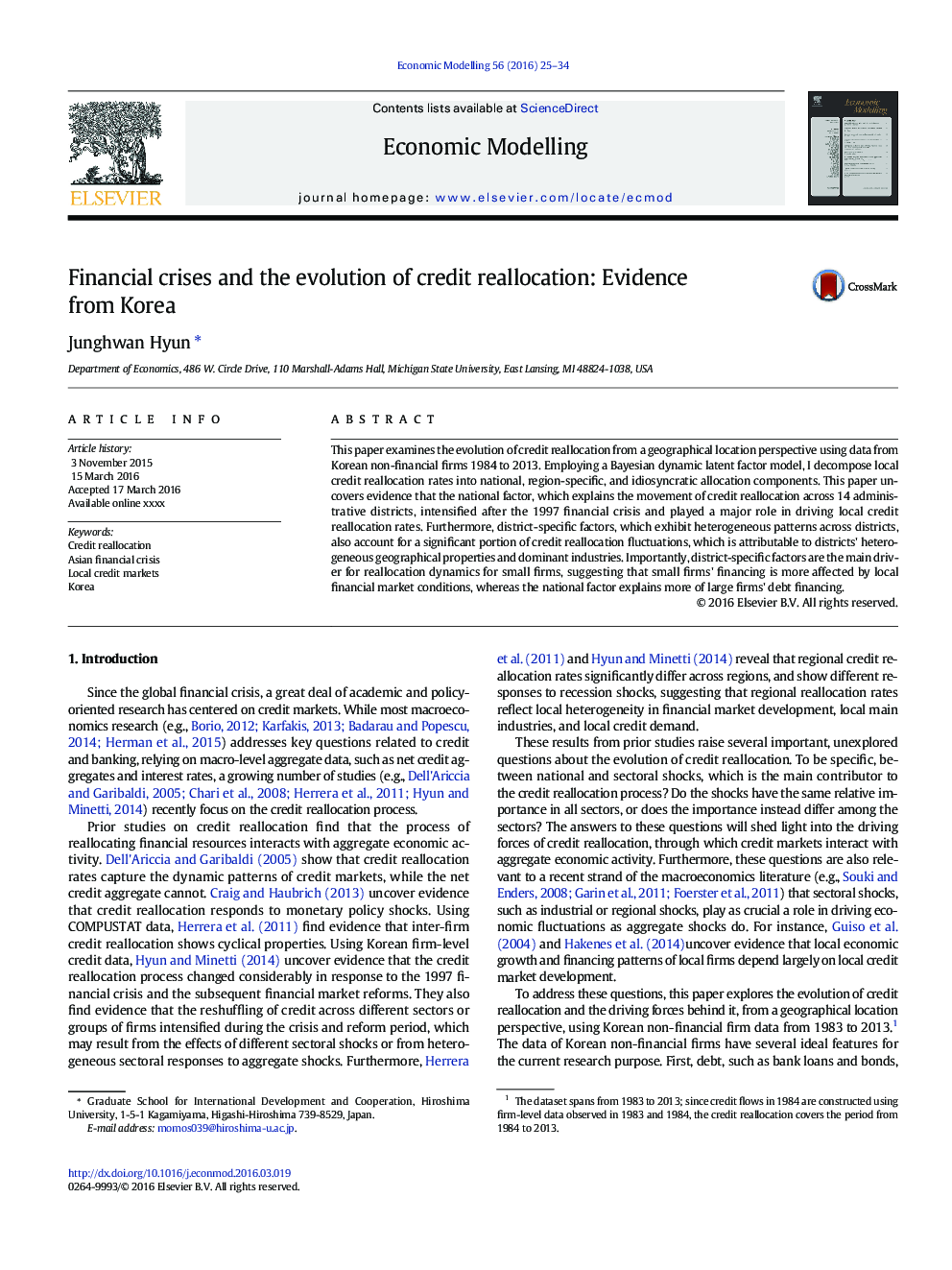| Article ID | Journal | Published Year | Pages | File Type |
|---|---|---|---|---|
| 5053323 | Economic Modelling | 2016 | 10 Pages |
Abstract
This paper examines the evolution of credit reallocation from a geographical location perspective using data from Korean non-financial firms 1984 to 2013. Employing a Bayesian dynamic latent factor model, I decompose local credit reallocation rates into national, region-specific, and idiosyncratic allocation components. This paper uncovers evidence that the national factor, which explains the movement of credit reallocation across 14 administrative districts, intensified after the 1997 financial crisis and played a major role in driving local credit reallocation rates. Furthermore, district-specific factors, which exhibit heterogeneous patterns across districts, also account for a significant portion of credit reallocation fluctuations, which is attributable to districts' heterogeneous geographical properties and dominant industries. Importantly, district-specific factors are the main driver for reallocation dynamics for small firms, suggesting that small firms' financing is more affected by local financial market conditions, whereas the national factor explains more of large firms' debt financing.
Keywords
Related Topics
Social Sciences and Humanities
Economics, Econometrics and Finance
Economics and Econometrics
Authors
Junghwan Hyun,
